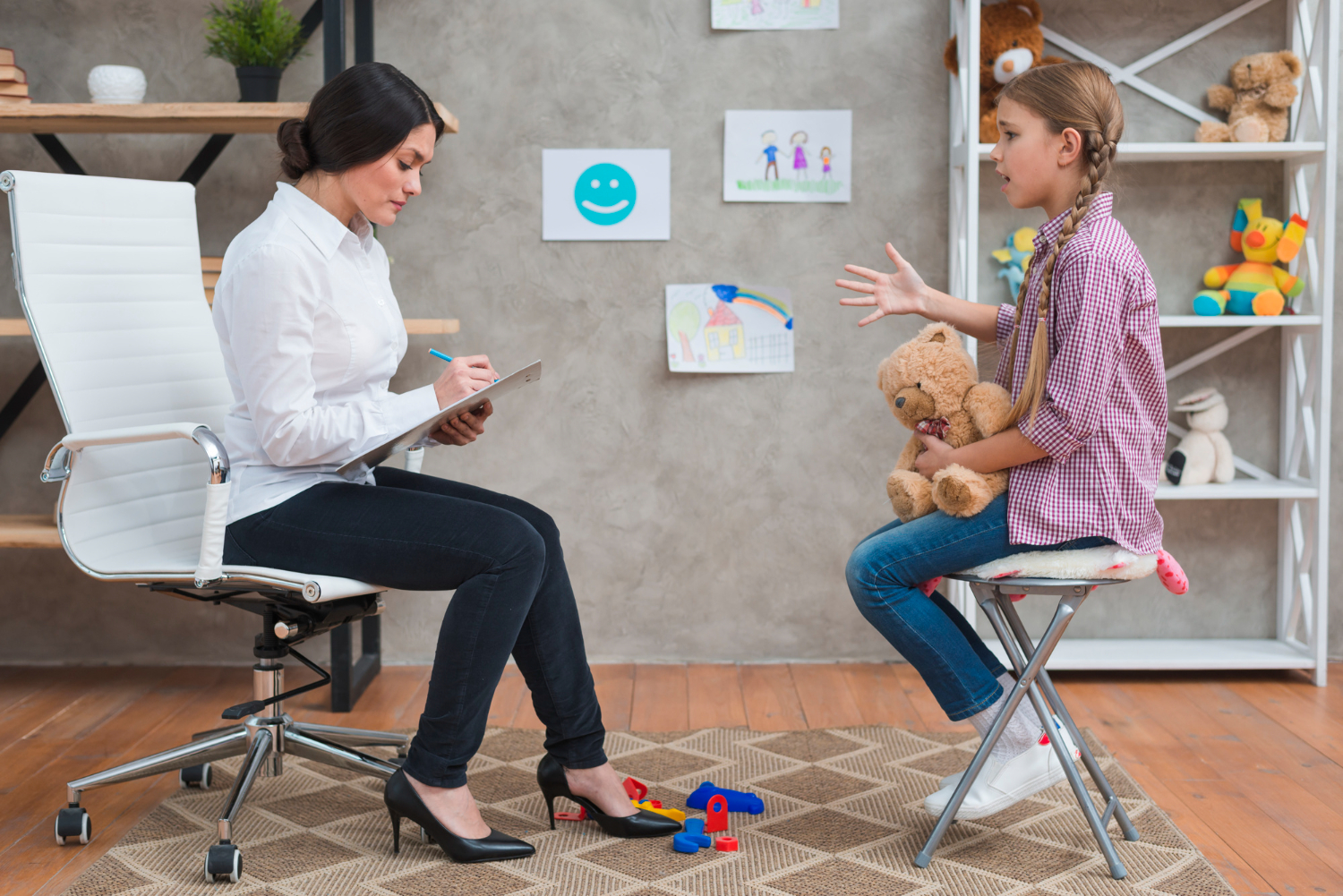
ABA for Nonverbal Communication
Unlocking Communication Through ABA Techniques
Introduction to ABA and Nonverbal Communication
Applied Behavior Analysis (ABA) is recognized as a leading intervention for enhancing communication skills in children with autism, particularly notable for its impact on both verbal and nonverbal communication. Nonverbal communication—encompassing gestures, facial expressions, and body language—is a critical component for those with autism, serving as foundational skills from which verbal language often develops. This article explores how ABA techniques can amplify nonverbal communication skills, leading to broader improvements in social interactions and quality of life for nonverbal individuals.
The Importance of Nonverbal Communication in Autism

What is the significance of nonverbal communication in autism and ABA therapy?
Nonverbal communication plays an essential role in the lives of individuals with autism, particularly since many experience challenges with verbal expression. This form of communication includes various elements such as:
These nonverbal cues are vital for interpreting social signals and engaging in meaningful interactions.
Applied Behavior Analysis (ABA) therapy embraces nonverbal communication techniques by utilizing visual supports and individualized prompts to encourage and reinforce these skills. Visual supports, like picture cards, help bridge the gap in communication for many nonverbal children.
Strategies in ABA therapy
Research shows that interventions in ABA can significantly enhance nonverbal communication abilities. Some effective strategies include:
Social interaction
Improving nonverbal communication fosters better social interactions, which are often a challenge for individuals on the autism spectrum. By focusing on nonverbal skills through role-playing and structured activities, ABA therapy encourages individuals to initiate and participate in social situations, leading to more fulfilling relationships.
Understanding these aspects enables therapists, educators, and parents to provide comprehensive support, dramatically improving the quality of communication and connectivity for nonverbal children with autism.
Enhancing Communication Skills with ABA Therapy

Techniques Used in ABA
Applied Behavior Analysis (ABA) employs various techniques to boost communication skills, particularly for nonverbal individuals with autism. Among these techniques is Early Intervention, focusing on teaching communication through structured activities and social interactions.
Some commonly used methods include:
Impact on Communication
ABA therapy significantly improves both expressive and receptive communication skills. As kids learn to recognize and use nonverbal cues, such as eye contact and gestures, they enhance their interactions with others.
Research indicates that many children with autism can develop verbal skills even after age four, especially with ongoing ABA interventions. These methods not only lead to better understanding and usage of language but also promote social skills, aiding them in everyday interactions.
Role of Reinforcement
Reinforcement plays a pivotal role in ABA therapy. Positive reinforcement encourages desired behaviors by rewarding successful attempts at communication, whether verbal or nonverbal. For instance:
Through these strategies, ABA therapy creates a supportive environment where children can practice and enhance their communication skills effectively.
Strategies for Nonverbal Communication in ABA

What are effective strategies for teaching nonverbal communication skills to children with autism?
Teaching nonverbal communication skills to children with autism involves a combination of visual supports, body language, and interactive activities. Here are some effective strategies:
By incorporating these strategies into ABA therapy, caregivers and therapists can significantly enhance the communication abilities of nonverbal children with autism, paving the way for further language development.
Differentiating Nonverbal and Nonvocal Communication in ABA

What distinguishes nonverbal from nonvocal communication in the context of ABA?
Understanding the distinction between nonverbal and nonvocal communication is crucial, especially within ABA therapy for individuals with autism. Nonverbal communication encompasses a broad range of expressive forms, including gestures, facial expressions, and body language. These elements can be utilized by individuals irrespective of their spoken language capabilities, playing a significant role in their social interactions.
In contrast, nonvocal communication refers specifically to forms of communication that do not involve spoken language. This includes methods like sign language and augmentative and alternative communication (AAC) systems. Such systems empower individuals to convey their thoughts and needs effectively, even in the absence of verbal speech.
It is also important to highlight terminology. The term 'nonspeaking' is increasingly favored over 'nonverbal', as it acknowledges the communicative potential of individuals who may not verbalize but can still understand and express ideas through alternative means.
This distinction plays a vital role in fostering an inclusive understanding of autism. By recognizing both nonverbal and nonvocal communication, practitioners can enhance the communication strategies utilized in ABA interventions, ensuring they meet the specific needs of each individual.
Significance in ABA interventions
In ABA, addressing nonvocal communication can significantly enhance interactions for children with autism. The use of individualized communication strategies like AAC not only substitutes presumed limitations but also fosters independence and encourages meaningful participation in social contexts.
By integrating visual supports and consistent routines, therapists can create an environment where nonvocal communication thrives. The inclusion of prompts and reinforcement strategies encourages children to utilize gestures or symbols actively, leading to improved expressive capabilities alongside nonverbal behaviors.
Moreover, an emphasis on understanding and interpreting nonverbal cues—such as eye contact and body language—further enriches the communicative repertoire of children engaged in ABA therapy. Overall, ensuring a clear distinction between nonverbal and nonvocal communication allows for tailored interventions, improving the quality of life for individuals with autism.
Implementing Nonverbal Behaviors in ABA Therapy

Modeling and Reinforcement
In Applied Behavior Analysis (ABA) therapy, modeling plays a crucial role in teaching nonverbal communication. Therapists demonstrate various nonverbal cues, such as gestures and facial expressions, allowing individuals with autism to observe and imitate these behaviors. Positive reinforcement is used to encourage these nonverbal behaviors, providing rewards when a child successfully uses them. This approach helps solidify the connection between nonverbal cues and social interactions, fostering better communication over time.
Role-Playing
Role-playing is another effective strategy in ABA therapy for enhancing nonverbal communication. Through structured activities, children practice engaging in conversations that rely heavily on nonverbal signals. These scenarios give them a safe environment to experiment with eye contact, body language, and gestures, and receive immediate feedback. This practice not only builds confidence but also helps individuals understand the context in which specific nonverbal behaviors are appropriate.
Visual Supports
Visual supports are integral to the success of ABA interventions, especially for nonverbal children. Tools such as flashcards, picture schedules, and social stories provide concrete representations of words and concepts. These supports enhance comprehension by translating complexities into understandable formats and can serve as cues for expected behaviors. For instance, a child might use a picture card of a cat, which aids them in associating the image with the corresponding vocalization. Combining consistent visual aids with strategies like Functional Communication Training can empower children to express themselves effectively, laying the groundwork for future verbal communication.
Understanding Nonverbal Behaviors
Nonverbal behaviors in ABA include a range of actions vital for effective communication. These behaviors encompass limited eye contact, atypical facial expressions, and gestures. Recognizing and effectively responding to these cues enhances the overall communicative competence of children with autism. Strategies like modeling, role-playing, and the use of visual supports are designed to improve these nonverbal skills, providing a comprehensive framework for individuals to navigate social situations better.
Conclusion: Building Pathways to Communication
As we've explored, Applied Behavior Analysis (ABA) is instrumental in developing nonverbal communication skills among children with autism. By leveraging tools such as modeling, visual supports, and strategic reinforcement, ABA enhances the ability to interpret and express nonverbal cues, laying a crucial groundwork for verbal communication. These efforts not only improve individual communication abilities but also foster a greater connection with their environment and peers, offering a transformative impact on their social world. Through continued dedication and tailored strategies, ABA paves the way for meaningful improvements in the lives of nonverbal children.
References


Partner with us on your child's journey
Milestone Achievements offers evidence-based ABA therapy to help children with autism reach their full potential. Together we’ll set meaningful goals and celebrate progress every step of the way.
Start ABA Services Today





